Slovenia / Republika Slovenija – Let’s explore here
What’s it like in Slovenia?
Ah Slovenia, land of the grass cutters! There are not many places as immaculate as Slovenia – it seems that grass trimming sales people made a fortune here! 😉
Slovenia is an absolutely beautiful mediterranean country set in the stunning Balkans, dominated by incredible mountains and forests. Not quite as well developed as some of its neighbours, it nevertheless offers some of the most spectacular scenery in the region, including the Julian Alps and Triglav National Park, as well as some of the best accessible caves in Europe. The highest point is Mount Triglav, in the north west of the country, at 9,395 ft (2,864m) above sea level.
It’s about the same size as Wales, UK and its population is just over two million people (2023). It shares land borders with Austria, Croatia, Hungary and Italy.

A bit about the history of Slovenia
Early History and Settlement
The area now known as Slovenia has been inhabited since prehistoric times, with evidence of ancient settlements by Illyrian and Celtic tribes. During the Roman Empire, the region was part of the provinces of Pannonia and Noricum. The fall of the Roman Empire in the 5th century led to the region being settled by Slavic tribes, who formed the early basis of the Slovene people.
Medieval Period and Habsburg Rule
By the 8th century, the area became part of the Frankish Empire and later the Holy Roman Empire. During the medieval period, the territory was ruled by various local lords, but by the 14th century, Slovenia became part of the Habsburg Monarchy, which ruled over much of central Europe. Under Habsburg rule, the region experienced relative stability, though the local Slovene population remained culturally distinct. The Habsburgs controlled the region until the early 19th century.
Formation of Yugoslavia
After the collapse of the Austro–Hungarian Empire in 1918, Slovenia became one of the founding republics of the Kingdom of Serbs, Croats and Slovenes, later known as Yugoslavia. In this new kingdom, Slovenia shared power with other South Slavic groups but remained a distinct region with its own culture and language. During the interwar period, Slovenia was relatively prosperous but faced political tensions with other ethnic groups in the kingdom.
World War II and Socialist Yugoslavia
During World War II, Slovenia was occupied by Nazi Germany and Fascist Italy. After the war, the region became part of the Socialist Federal Republic of Yugoslavia, under the leadership of Josip Broz Tito. Slovenia was one of the six republics of Yugoslavia and had a relatively high standard of living compared to other republics. However, it also experienced political repression and economic struggles during the communist period.
Independence and the Breakup of Yugoslavia
In the 1990s, as Yugoslavia began to disintegrate amid rising nationalism and ethnic tensions, Slovenia declared its independence from Yugoslavia on June 25, 1991. This led to a brief 10-day war with the Yugoslav People’s Army, which Slovenia won. The country’s independence was internationally recognised in 1992. Slovenia’s peaceful transition to independence and its relatively stable economy set it apart from the other republics in the former Yugoslavia.
Modern Slovenia
Since gaining independence, Slovenia has undergone significant political, economic and social changes. It established a democratic government and began transitioning to a market economy. Slovenia joined NATO in 2004 and became a member of the European Union in the same year. It adopted the euro as its currency in 2007, further integrating into the European economic and political framework. Slovenia is now regarded as one of the most prosperous countries in central and eastern Europe. Today, Slovenia is a parliamentary republic with a strong economy, known for its high standard of living, environmental preservation and political stability. It continues to strengthen its position within European and global institutions.

Slovenia road trips
We’ve created a blog for our road trip in Slovenia. You may find it helpful, and you may pick up some tips, or more likely mistakes not to make that we’ve made 😉 Our Slovenian road trips were part of a much larger European road trip.
The coast
On our first Slovenian road trip we travelled from Pula in Croatia around the coast to Portorož and Piran. the coast is only tiny, and so it’s outrageously overcrowded, with massive traffic jams!
The caves
Similarly to Slovakia, there are loads of caves in Slovenia, and we love caves. So we headed over to Postojna and the National Park of Caves. Wow, Postojna is so massive they’ve built an actual train track inside it to get you further into the cave to see all of the wondrous stalagmites and stalactites, there are literally million of them! What a fantastic place!
Pristine Slovenia
We then moved north to Kranj, the beautiful Lake Bled. Wow, Bled is so pretty and pristine. Not cheap though, but well worth the effort, just for the views.
The mountains in the north
From Bled we drove on to the mountains and valleys of Zgornje Jezersko, and the lake Planšarsko jezero. This area was one of the highlights for us in Slovenia, as its less crowded that the fantastic mountains to the west, and just so pretty. There are loads of walks and hiking trails, and everyone was really welcoming.
The mountains to the west
We then journeyed west through the Triglav National Park and Vršic Pass, over the mountains to Italy (to save on the massive costs of staying in the park itself, which was also fully booked). Triglav is spectacular, and has possibly the best views in Slovenia, although its very bust with tourists. The Vršic Pass is definitely wort the effort though, as it’s simply brilliant, as good as anywhere in Switzerland or Austria.
The capital
We loved Slovenia so much, we couldn’t wait to get back to driving through Triglav, before journeying on to the fantastic capital, Ljubljana.
Map of our first Slovenian road trip
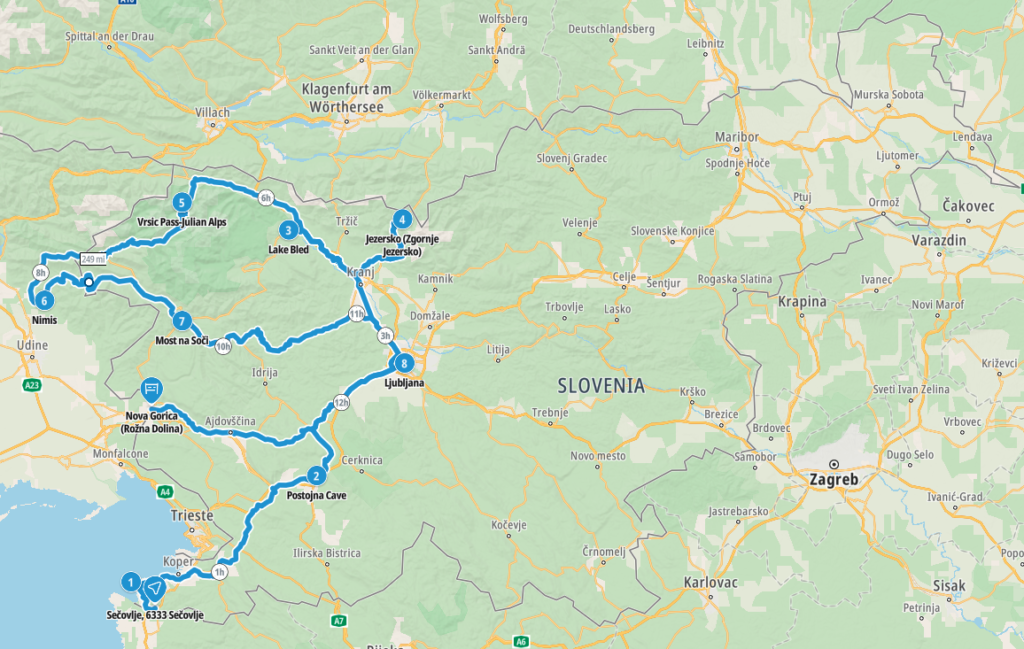
This is a map of our first Slovenian road trip. Our route took us from Croatia through Slovenia before moving on to Italy.
We went from Piran – Kotsina – Veliki Otok – Postojna cave – Lake Bled – Zgornje Jezersko – Planšarsko jezero – Logarska Dolina – Triglav National Park – Vršic Pass – Most na Soči – Ljubljana
Map of our second Slovenian road trip
Eastern Slovenia
On our second road trip in Slovenia, we stopped over in Ptuj in the east of the country, as the weather was better that on our first road trip. The east is really quite different from the rest of Slovenia, being more rural and agricultural. It really reminded us of how the country must have looked in older times.
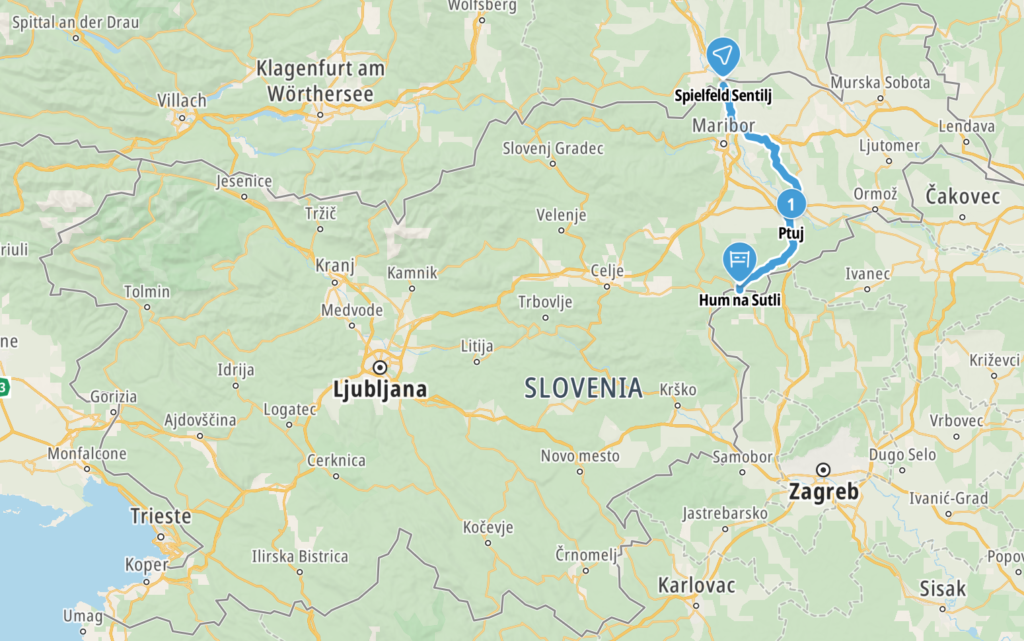
This is a map of our second Slovenian road trip. Our route took us through Slovenia on the return journey from Austria to Croatia and Bosnia & Herzegovina.
We went from Šentilj v Slovenskih Goricah – Ptuj – Zgornje Gruškovje
Map of our third Slovenian road trip
Central Slovenia
On our second road trip in Slovenia, we stopped over in Ig, south of the capital. The owners of the newly renovated accommodation were super friendly and the village itself was really quaint. We enjoyed seeing how more rural areas compared to the capital and the tourist areas.
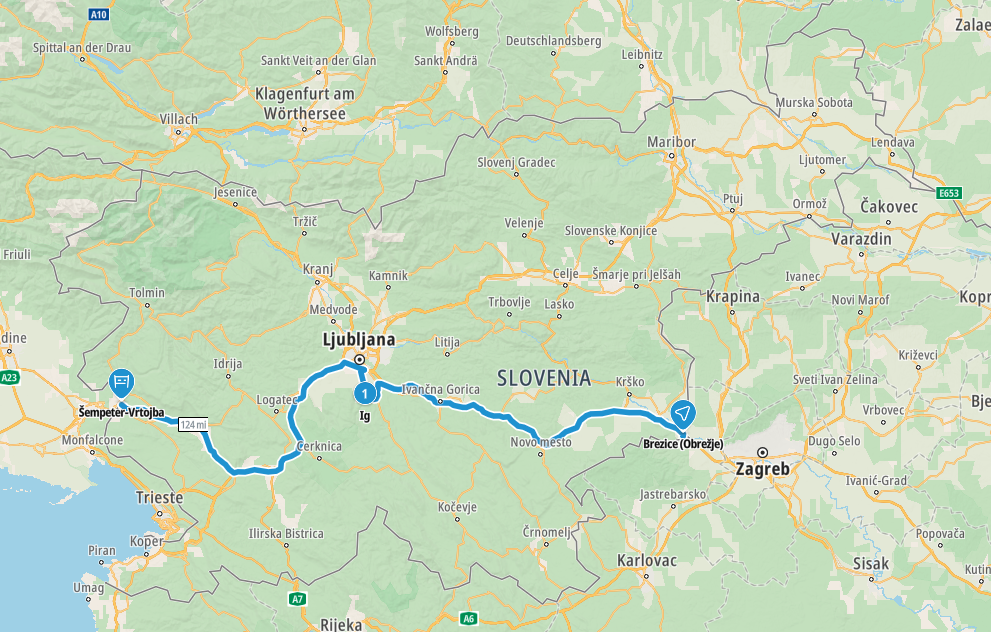
We’ve been to several of the countries in the Balkans, and we know Italy very well. However we didn’t know Slovenia well at all before this trip. It’s a really interesting place that surprised us quite a lot, particularly in how well developed it is, how well so many people spoke English and just how incredibly beautiful (and manicured) it is. It reminded us a lot of Austria, with which it shares a border, Switzerland and Slovakia.
Also the people were, as most seem to be on this mammoth tour, incredibly friendly and generally seemed happy with their lot. Slovenia is definitely a place that most people would be delighted to visit.

Our favourite Slovenian places
These are some of the best places that we explored on our road trip through Slovenia. We’ve put them in alphabetical order.
Lake Bled
Bled is an extremely pretty little town sited on the stunning Lake Bled. Parking is not easy and is not cheap – though similar to prices in Leeds, UK. Queues to enter the town are quite lengthy, but once you’re in, it’s lovely. There is a tiny beach area and many restaurants, bars and hotel surround the lake.

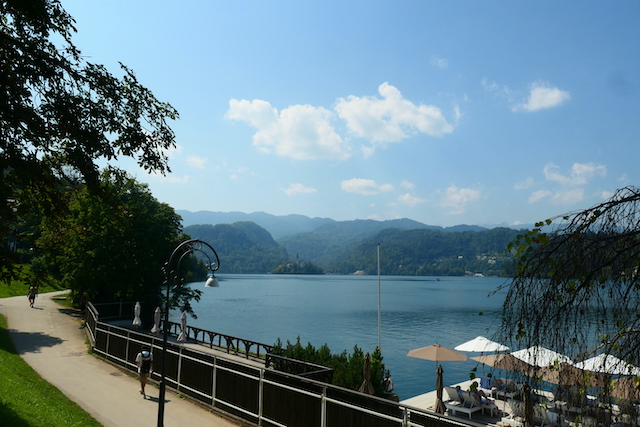
Ljubljana
Ljubljana is a small capital city, but really vibrant in the centre. It’s well set up for tourism and has loads of restaurants and cafés catering for every taste. There’s loads to do and see, and we found it a really relaxing place to be, especially for those wanted to simply watch the world go by! Outside of the centre it’s very quiet and easy to navigate your way around safely.

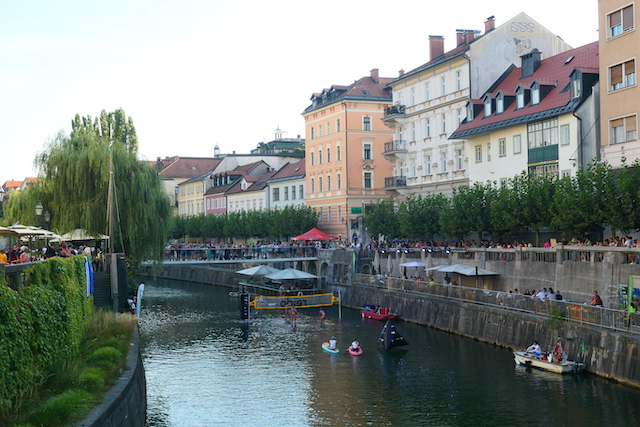
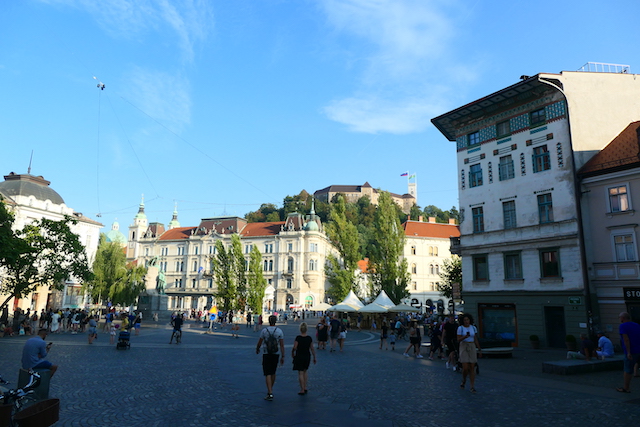
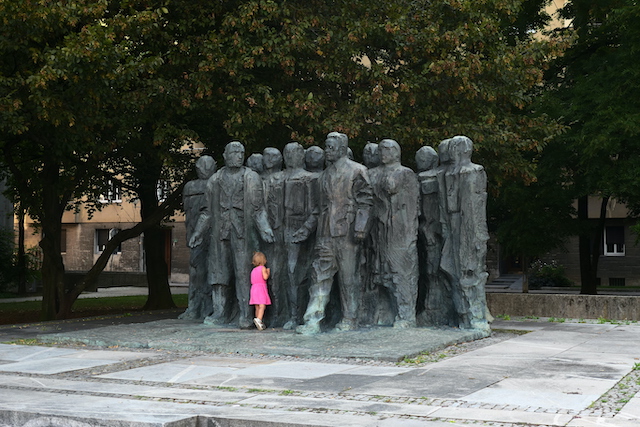
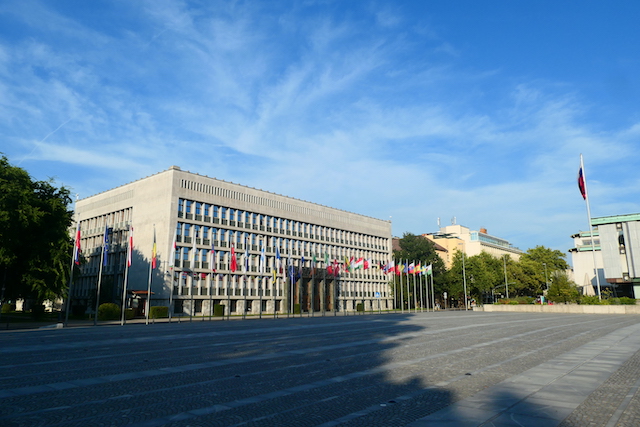

Postojna cave
Postojna cave is by far the biggest cave that we’ve ever been to. Once you’re through the entrance gate, you board a train to take you to the main viewing areas – and it’s not a short journey. The cave is 24,340m long and hundreds of feet high! There are literally millions of stalagmites and stalactites, many of which are massive and almost a million years old. The whole cave system formed due to a collapse of rocks underground and the river above slowly seeping through into the cave over the million years.
There are proteus salamanders that live in the cave which are totally blind and can live without food for ten years apparently – although how they found that out goodness only knows!
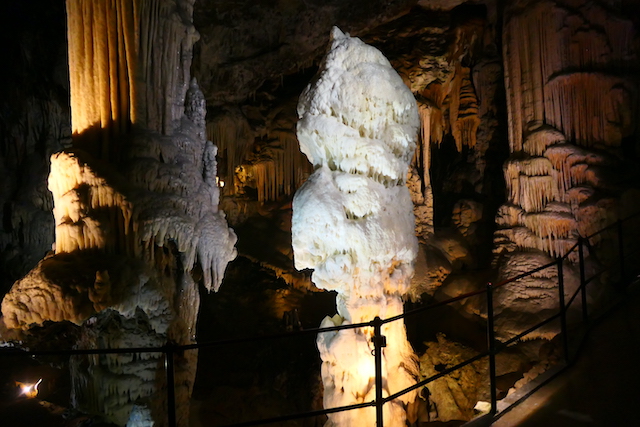

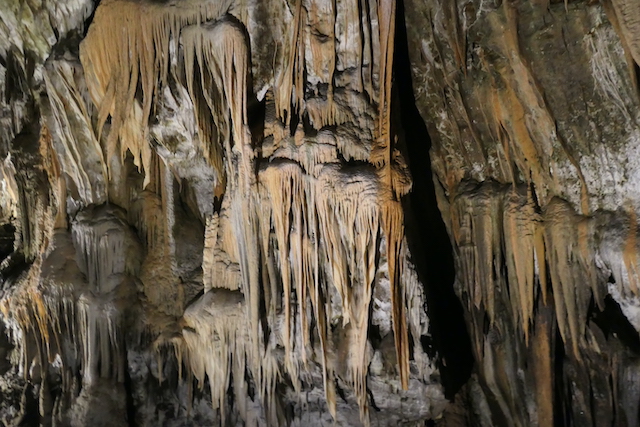
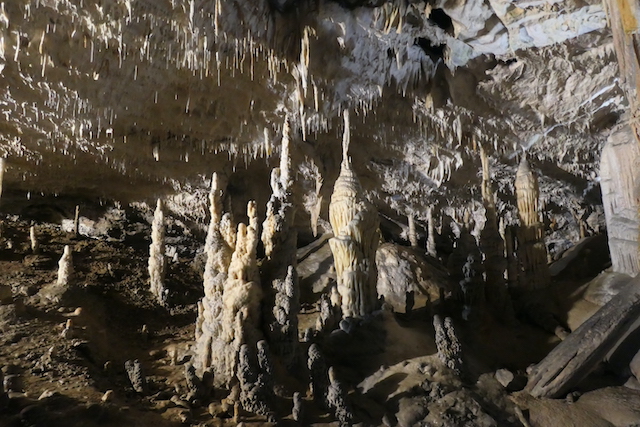

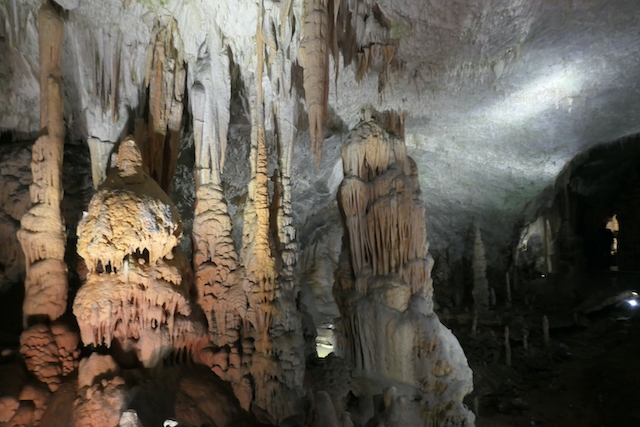
Triglav National Park and Vršic Pass
The National park is very busy for quite obvious reasons. That said, it’s not so busy that you can’t find your own piece of outstanding beauty all for yourself. There are many mountain treks to be walked, many mountain roads to be driven, and many, many outrageous views to be seen.
In the first picture below you can just make out a hole in the mountain near the top to the right. The second picture is a close up of the hole – the Prisank window. It is around 80m high and around 40m wide, giving you an idea of the size of some of these mountains in the Julian Alps.

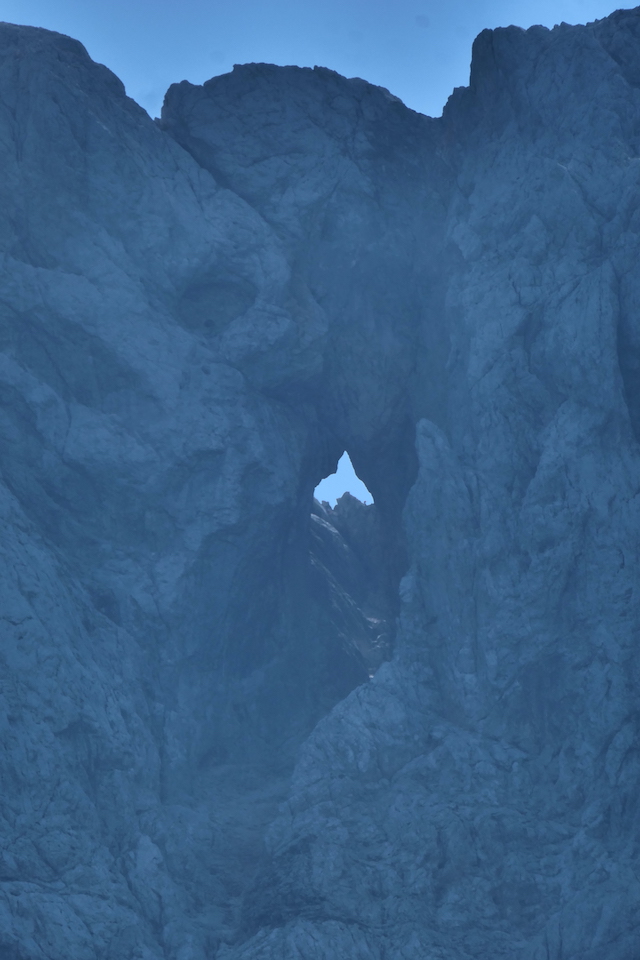
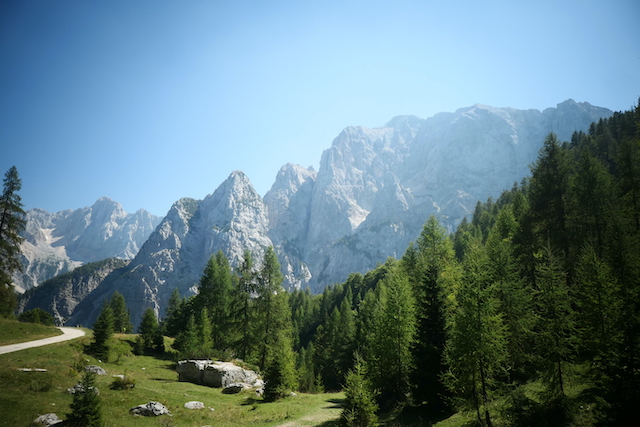
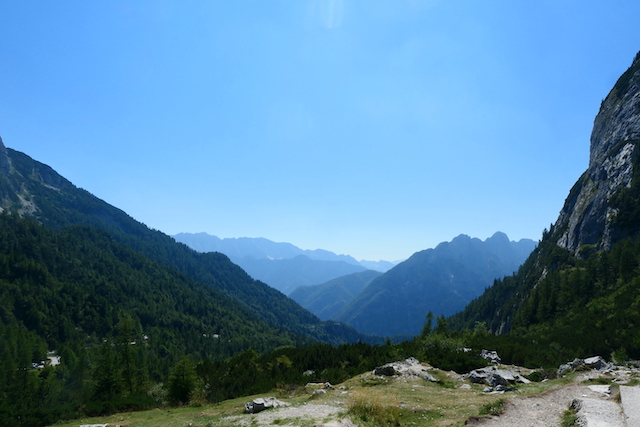
Zgornje Jezersko and Planšarsko jezero
Zgornje Jezersko is a beautiful hamlet in Carinthia, on the border with Austria. It comprises a stunning valley looking on to the Kamnik–Savinja Alps, and in particular Mount Grintovec. There are numerous mountains walks in the area, as well as natural spas, and a beautiful lake Planšarsko jezero. It’s one of the most relaxing places we’ve ever stayed and is highly recommended.
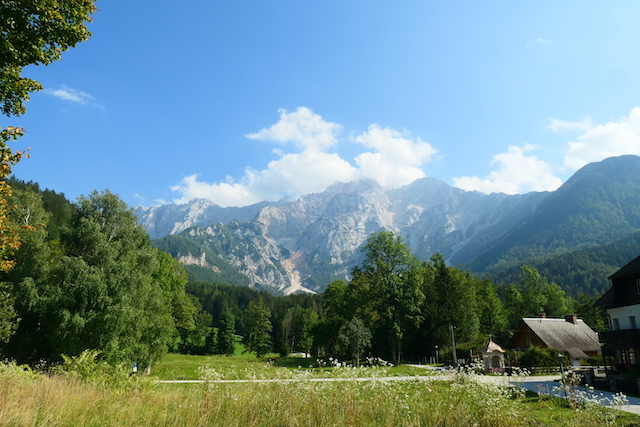
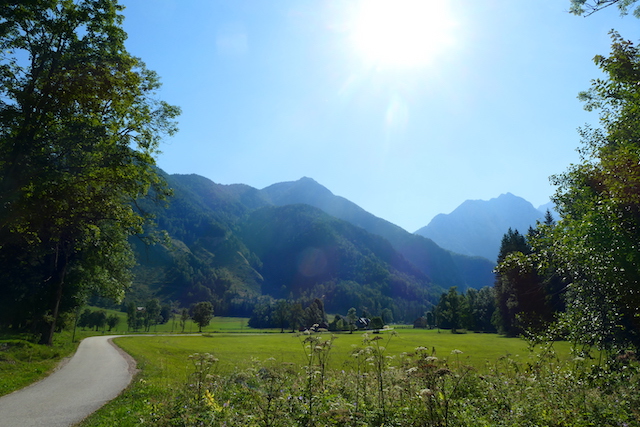
What’s it like to drive in Slovenia?
As with almost everywhere on the continent of Europe, they drive on the right hand side of the road in Slovenia.
Driving at the coast in Slovenia
When we entered Slovenia it was quite a shock as we’d just come from peaceful Croatia, with its lengthy stunning coast. Slovenia only has a tiny coast – it’s only 29 miles long – and as such it’s super maxed out busy! Like beyond what most would expect to be reasonable! We were in a queue of traffic from the border, all the way through Portorož to Piran, before finding out that the car parks were full and really we ought to be spending our valuable time elsewhere!
Driving in the capital in Slovenia
Elsewhere in Slovenia, life is MUCH more relaxed than at the riviera! To such an extent that – like several of the countries we’ve been through that have small populations – you’re often wondering where everyone is! Even the capital, Ljubljana, with its population of less than 300,000 people is mostly empty it seems! We drove in and out barely realising that it was a city! The centre is of course much more vibrant than the outskirts.
Driving in the mountains in Slovenia
In the mountains and valleys to the north, the populations and traffic is sparse. In the west, the Triglav National Park brings in hoards of tourists and traffic jams are common. Similarly treks up mountains passes can be slow, especially if you’re following drivers unused to driving in the mountains. Traffic in and around Jesenice for instance can be very busy.
Do you require an international driving permit in Slovenia?
We’ve created a dedicated page to driving abroad, which answers this question, and more, which you might find helpful.
Can you use your UK driving license when driving through Slovenia?
We’ve created a dedicated page to driving abroad, which answers this question, and more, which you might find helpful.
Do I need a carnet de passages to drive in Slovenia?
We’ve created a dedicated page to driving abroad, which answers this question, and more, which you might find helpful.
What are the speed limits in Slovenia?
The speed limits for cars in Slovenia are:
- 30 mph (50 km/h) for urban driving
- 45 mph (90 km/h) outside of built up areas
- 60 mph (100 km/h) on dual carriageways
- 80 mph (130 km/h) on motorways
What currency do they use in Slovenia?
In Slovenia they use the Euro. The use of credit / debit cards is now widespread. Travellers cheques are accepted. There are lots of ATMs.
You should make yourself aware of the amount that your bank charges you for using credit and debit cards abroad. Often credit cards are cheaper for purchasing items directly, and for withdrawing cash from ATMs.
What language do they speak in Slovenia?
They speak Slovenian in Slovenia, although Italian and Hungarian are also widely spoken. Many of the younger generations also Croatian and English, and along the border with Italy, they also speak Italian and German.
What time zone is Slovenia in?
Remember, when you’re planning your next trip to take a look at what time zone it’s in.
Do I need a visa to visit Slovenia?
We’ve created a dedicated, more comprehensive page on visas, which you should find helpful. Check it out!
Is wild camping legal in Slovenia?
No, wild camping is illegal in Slovenia, although it is widely tolerated.
What plug / socket type do they use in Slovenia?

In Slovenia they use plug / socket type F.
Health issues in Slovenia
Is it safe to drink water in Slovenia?
Yes, it is safe to drink tap water in Slovenia. Bottled water is also readily available across the country.
What vaccinations are required for Slovenia?
This NHS website is kept up to date with all relevant information on vaccinations in Slovenia.
Phones in Slovenia
What is the country calling code for Slovenia?
The country calling code for Slovenia is +386
What are the emergency phone numbers in Slovenia?
- The emergency number for police in Slovenia is: 112 / 113
- In Slovenia, the emergency number for ambulance is: 112
- The emergency number for fire in Slovenia is: 112
If you’ve got some useful info that you’d like to share, let us know!
And don’t forget to check out all the other pictures!
